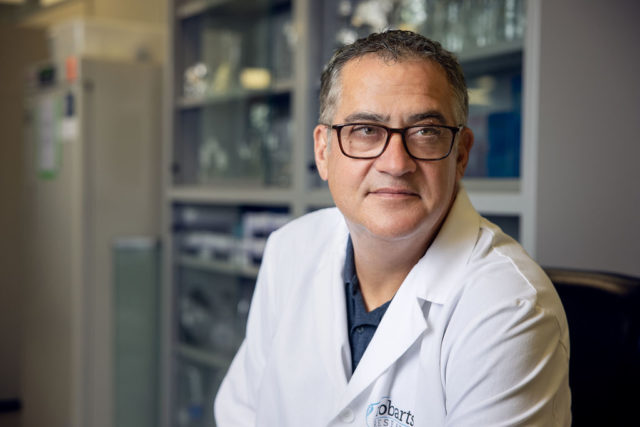Monitoring glucose levels and taking daily insulin shots will be a thing of the past for diabetes patients if David Hess sticks the landing.
As the Sheldon H. Weinstein Chair in Diabetes Research at Western University, Hess pushes the boundaries of diabetes care, management and treatment for the more than 422 million afflicted globally with the disease. Currently, he’s advancing stem cell research by identifying, which proteins are essential to islet regeneration, and which human building blocks are most efficient for creating those proteins.
“My goal is to use stem cell therapy for helping the body heal itself naturally rather than relying on temporary external treatments,” says Hess.
Navigating autoimmunity, the body’s natural defence against foreign cells, remains the most significant barrier to successfully using stem cell therapy as a treatment for Type 2 diabetes. Hess and his research team have already shown the role stem cells play in regeneration. Now, they’re working hard to find a way to dampen autoimmunity, so the body doesn’t attack healthy, regenerated cells.
“We discovered that what stem cells produce is far more important than what they actually become,” Hess explains. “The proteins they generate are what really stimulate the regenerative process.”
Finding Final Pieces
Keeping the immune system away from regenerated cells is only half the puzzle. Hess and his collaborators must also find ways to keep the cells alive, as they don’t survive very long in an oxygen-deficient environment.
Tapping into the wealth of expertise at Western, Hess enlisted the help of Lauren Flynn, who specializes in bioengineering, to drive his research forward. Flynn generates decellularized adipose tissue, which is tissue with everything removed but the structural cells.
“My team uses that material as a scaffold to grow and sustain new cells, allowing us to make substantial progress,” says Hess.
The award-winning Western researcher is also collaborating on clinical trials, based at the University of Toronto, focused on fine-tuning diabetes medications.
“We’re examining how these new medications can impact the circulating level of pre-existing stem cells in the blood,” he says. “There is significant potential to leverage a patient’s own stem cells to help prevent cardiovascular complications, especially in patients with Type 2 diabetes.”
Although it could be years before his research translates directly into therapeutic treatments, Hess is optimistic for the future.
“It’s an honour to learn from and contribute to stem cell research that’s internationally renowned and making huge strides to improve the well-being of diabetic patients,” he says.
